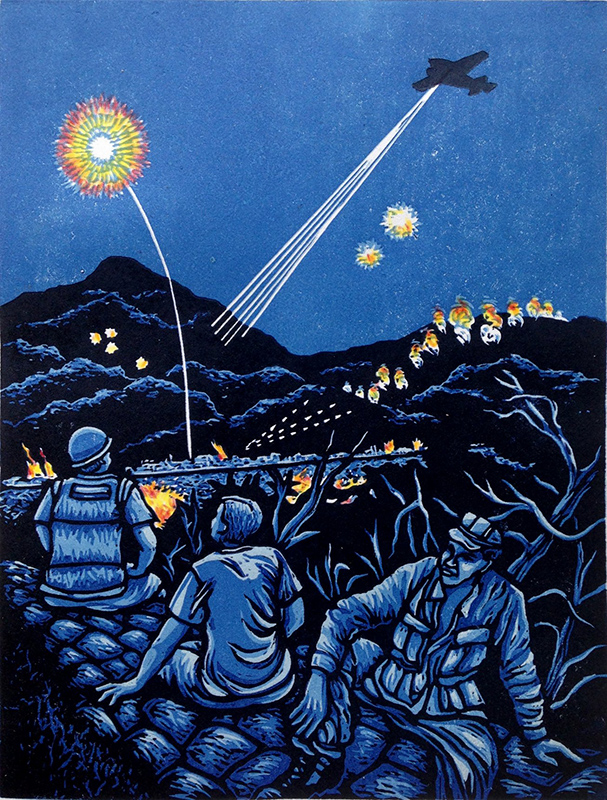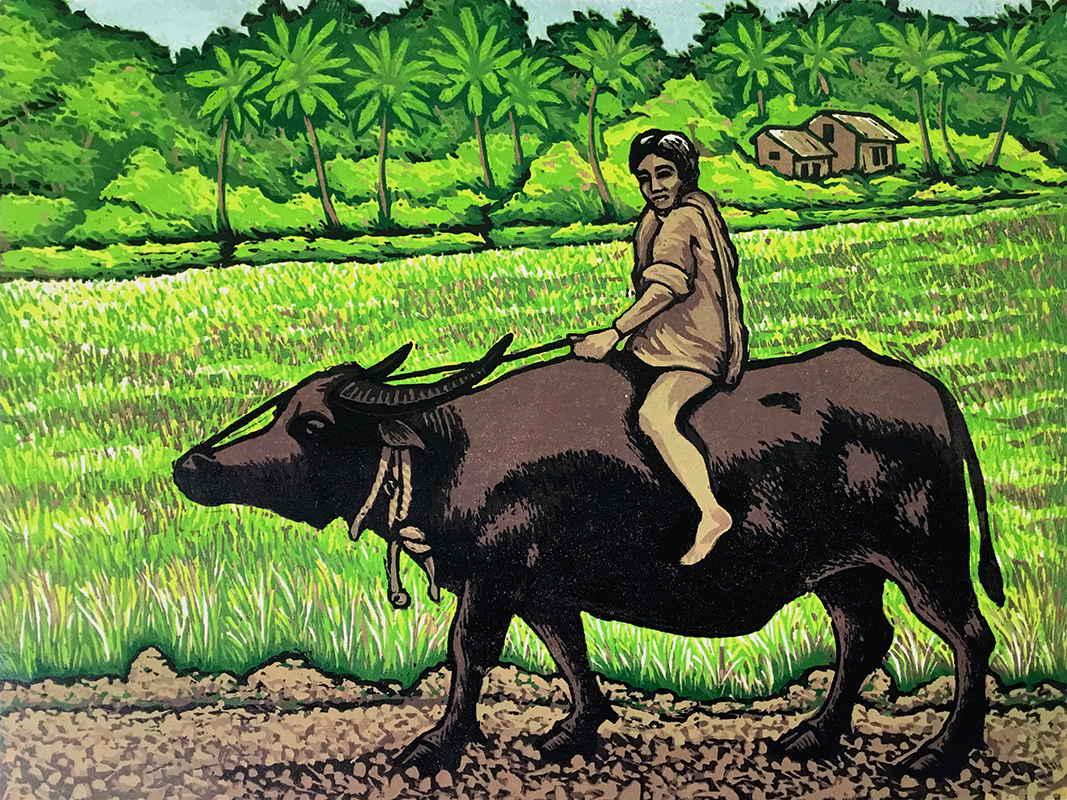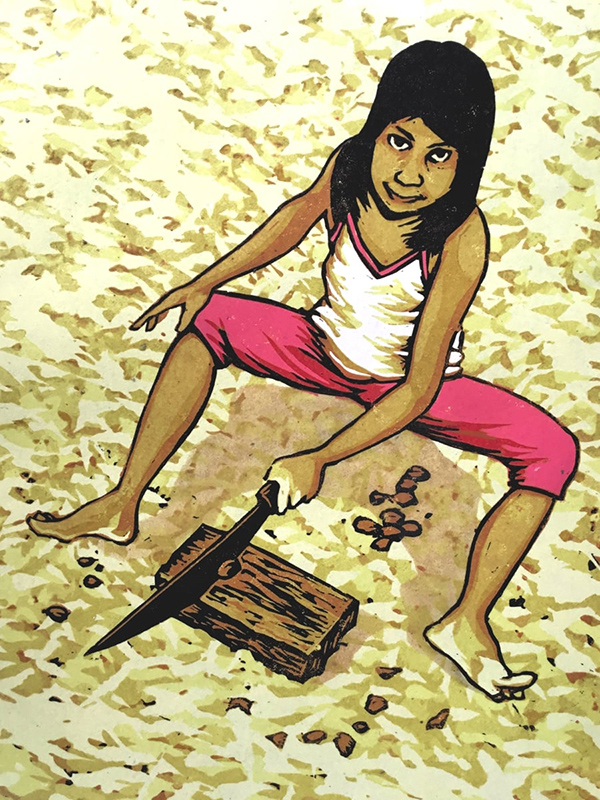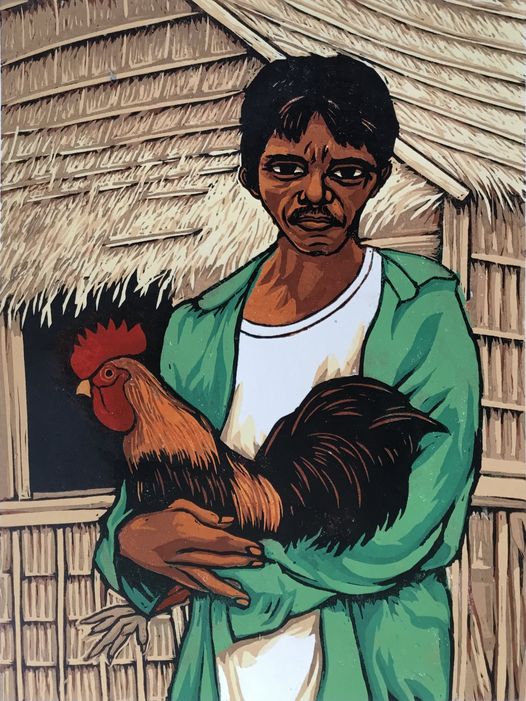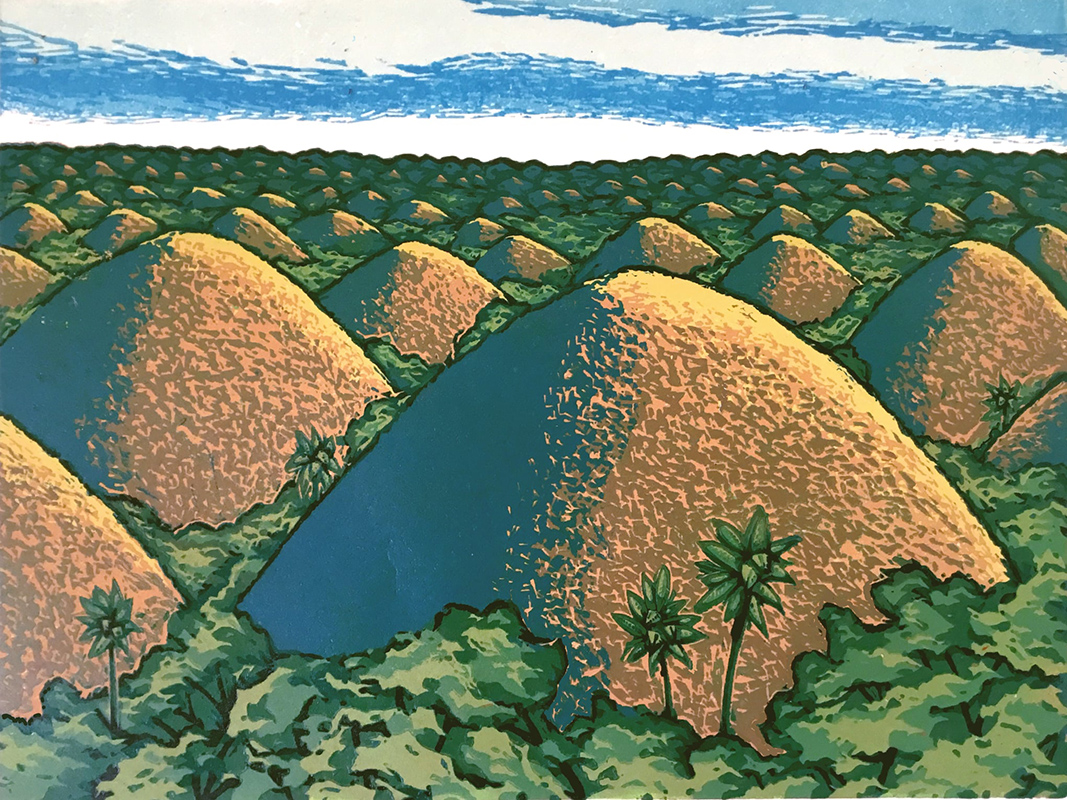With more attention now on printmaking, there are none quite like Keith Gum’s works when it comes to practices. Keith is an expat and retired art teacher, with two self-published books to his name: 3rd Platoon, a Corpsman's Story of the Vietnam War and his most recent book, Leatherbark: an Illustrated Memoir.
Self-publishing is one modality of presenting prints. But unlike artists books that are often focused on highlighting works of an artist, Keith’s art direction is motivated by his own narrative. “My books are snapshots of an experience, no more than several pages of text and a single image. These can feature the trivial or traumatic, whatever lays hold of my imagination, from the horror of the Vietnam war to a rustic old train.” He says of his subject.
“I was trained as a fine artist by instructors who had little respect for illustration. The transition from one to the other has not come easily. Prior to the book projects, I didn’t consider the audience or have to adapt the image to a story. Self-publishing has opened a new perspective, a less self-centered approach to printmaking.”
“Suicide Prints”
Keith’s approach to reduction print is notoriously called a “Suicide Print” because the artist carves the block according to the color he needs to print on paper, meaning if he makes a mistake on his lino plate — like going back to a certain color — he has to start the process from the beginning. “Long ago I worked with multiple blocks but it's quite expensive and registration is more difficult. I'm pulling only four prints per edition. These will never be framed, nor is there a market. These are created only for book illustrations.”
His prints can be mistaken for paintings when viewed digitally when, in fact, it is a relief print made using a reduction process. This type of printing allows for multiple colors to be registered on a sheet of paper and it can accommodate features like gradation in color, as well as expressions of shade. The main challenge in this approach is that it requires planning and problem solving in terms of its execution, unlike reliefs that make use of one-color for its entire plate.
In spite of processes’ daunting moniker, he found a way to simplify his process to a degree — with the use of digital tools. “I make a rough sketch in pencil to upload as a photo for iPad to edit in Procreate, an inexpensive graphics program. Working in layers and instant color allows a printmaker the same freedom as an oil painter to manipulate design elements. I print a final line drawing for tracing to the lino. The software is a great tool for organizing basic shapes but the real creativity is still in cutting the block.” He says.
The process of creating layers in print is similar to contemporary digital printing technologies such as off-set and RISO printing. It remains mostly manual in a sense that the final output is a hand-pulled print.
“Reduction printing is an unforgiving process. Planning a clear strategy is essential.” According to Keith: “There is no going back. All colors are cut on a single block, with the lightest value first. I make my paper of 50/50 abaca and cotton. A self-built bottle jack press prints the first layers and then I hand print the last colors with a baren, allowing greater control.”
A Well-Rounded Practice
Apart from printmaking, Keith also has an intimate understanding of handmade paper-making processes. He has spent years making paper since he founded Ifugao PaperCraft, a paper mill studio based in Inverness, Florida. The studio employs both western and Japanese methods of paper making with fiber sourced locally, particularly abaca from the Ifugao Province. “I brought my hollander and other equipment but still have a lot of paper I made in the States. There are many wonderful fibers in the Philippines besides abaca that make great printmaking paper.” He says. This part of his practice is documented on the studio’s tumblr blog.
Prior to moving to the Philippines, Keith was a history teacher based in Saipan in the Northern Marianas. Later on, he went on teach art in The University of Guam and then in Florida. It was in Guam where he started his printmaking practice. His book, 3rd Platoon, a Corpsman's Story of the Vietnam War, is an autobiographical book that talks about his life as an American corpsman serving during the Vietnam War. His illustrations in his first book take on graphic depictions of the war based on his memory. These illustrations are all skillfully rendered as prints to where his mastery of printmaking shines. Today, he enjoys his retirement making prints in Cavite where he is now based.
To see more of Keith’s work, you may visit https://www.facebook.com/leatherbarkprints. You may find Keith’s books on Amazon here or here.
Marz Aglipay is an independent art writer and stamp artist.

